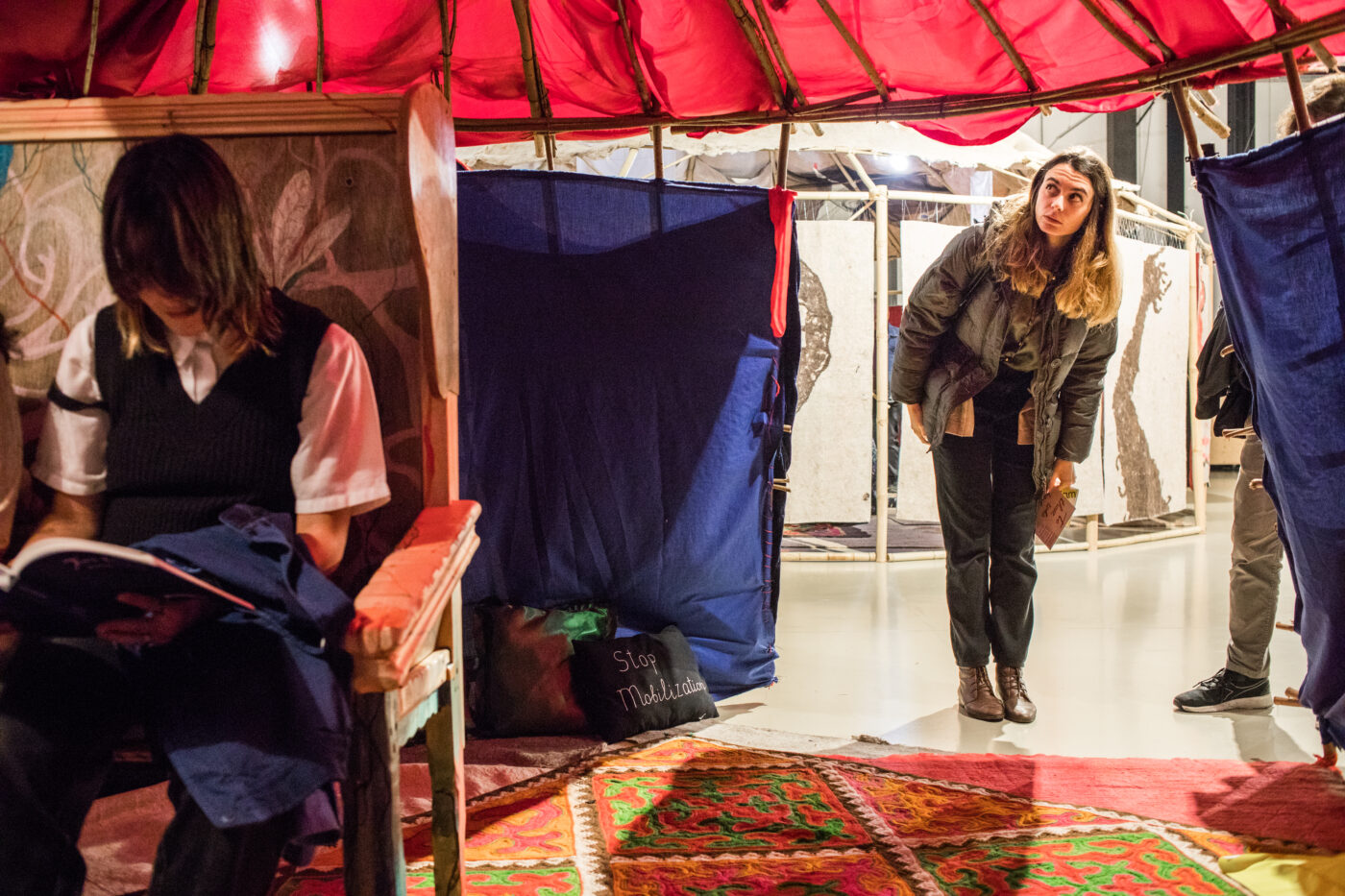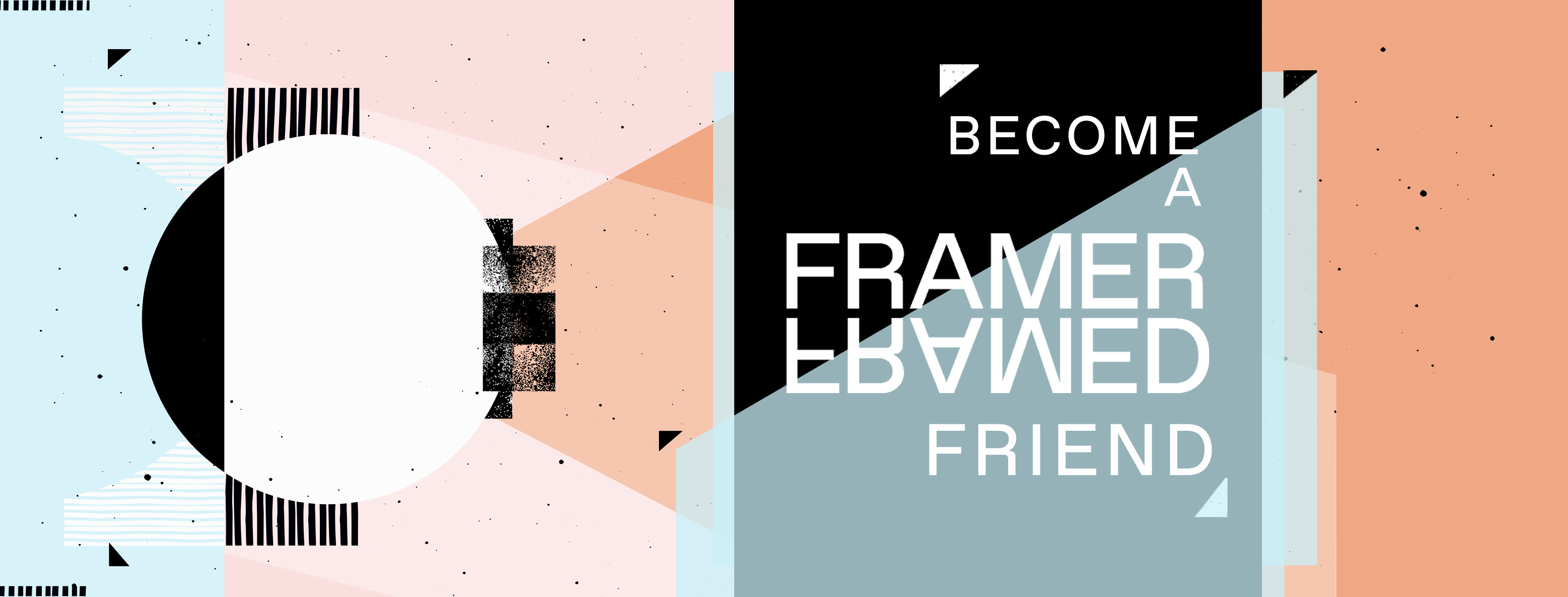
Notes on access 2: Visual Awareness
As part of our new accessibility project, Framer Framed took some training on assisting people with vision impairments.
Building on our recent research into the foundations of access theory, we are now looking towards practical ways that our exhibitions and public programmes can be made inclusive to minority groups. In this second installation of Notes on access, we hope to make our learning about access support available to museums, galleries and interested people by sharing it on our website.
Eve Oliver, December 2022
Before proceeding with this report, it is important to explain our approach to terminology. Terms – their histories, biases and syntax – have the ability to perpetuate old misunderstandings, stereotypes and injustices. When talking about (dis)ability, a term with its own contestations, we must choose terminologies which reflect the thoughts and wishes of the community it is describing with their guidance. In the context of vision impairments, we have chosen the term “person with a vision impairment” to describe members of this community. In this way, we are not ascribing the condition to their identity in totality, as the term “visually impaired person” connotes, but rather, we describe that their vision is impaired in addition to them being a person first and foremost. We were advised about this terminology during our training with a member of the community, however, we understand that for many this choice of words may not be right and we do not wish to offend anyone. We also make use of ‘partially-sighted’, although we acknowledge that a vision impairment does not equate to a partial grasp of sensory experience. We are open to hearing your thoughts about terminology. Please email eve[@]framerframed.nl if you have any tips or reflections.
On Wednesday the 23rd of November, Framer Framed took part in some visual awareness training run by the VocalEyes charity. The session was facilitated by Kirin Saeed – an educator and advocate with a vision impairment who specialises in improving visual access support in cultural spaces – and Andrew Holland, who specialises in audio description work. The workshop gave museum and art gallery workers a framework designed to support inclusive practices for people with vision impairments. The session was split up into two sections: how museum workers can assist visitors with vision impairments, and, how artworks and installations can be diversified, supplemented, and equally communicated with audio descriptions, tactile models and relief drawings. In this second installation of Notes on access, we reflect on what we learnt through the themes of improving, new ways of seeing and contemplating a more accessible future.
Improving
First, the group of seven museum workers were asked to introduce themselves on Zoom. For Kirin and many other people with vision impairments, visual descriptions after personal introductions are essential to contextualising and visualising the speaker against their voice. Normalising this practice is yet to be done by many of us. Eve, one of our community members, described herself during the training:
“Hi, I am Eve. I have blonde hair in a choppy hairstyle and I am wearing a blue patterned turtleneck top. I wear silver glasses and I am sitting in front of a messy bookcase.”
Adding this layer of visual description to personal introductions encourages us to consider alternative ways of assigning identity and meaning to speakers. By giving everyone the agency to communicate their personal perception of themselves, (un)conscious bias related to personal identity and visual appearance is avoided, and listeners are encouraged to see the speaker as they see themselves.
Next, Kirin asked us to explore our own biases related to people with vision impairments. She asked us to think back to any close encounters we have had with people with vision impairments and to consider how we approached assistance, guidance, care, and guide dogs. In response to our stories, she highlighted how often the common denominator in difficult experiences between those with vision impairments and those without is the lack of contact between the two groups in general, which translates to a lack of understanding. She noted that to decrease fear and improve understanding, we should approach guiding with openness and inquisitiveness. Ask somebody if they need help and be responsive to their needs. Sometimes people will say no, and that’s ok.
Similarly, giving guidance to a person with a vision impairment is an important dimension of access. During the visual awareness workshop, we learned about the strength of attention to detail when it comes to guidance. If you are asked to guide someone with a vision impairment, ask where specifically they need to go, and describe the area back to them that they have requested. If you feel you need to introduce yourself, stand still, and allow the person to focus their vision on you. Ask them for consent to tap their arm so they can physically orient themselves in your direction. If they ask for or consent to guidance, offer your arm to them. Usually, the person needing guidance will hold the guide’s elbow, so that they are in control if they wish to leave the navigation. The guide’s elbow acts as a gear stick, orienting left and right to signal in which direction they are being taken by the guide. Some people prefer to take the shoulder of the person guiding – make sure this is communicated between you both before starting the guidance. As the person begins the navigation, attention should be paid to hazards in the room. Considering hazards as numerous in any space is important in this context, as they present much more of a risk to people with vision impairments. Consider that something as simple as a door needs to be described, as doors can move to the left, right, forwards and backwards unpredictably, and, although unhazardous to a seeing person, this is hazardous to someone with a vision impairment. Pay particular attention to things like rails and stairs, especially if the guided person is placing their balance on something.
New ways of seeing
Next, Andrew Holland, who works on audio describing in theatres and museums, shared his knowledge about how to translate visual information into audio information. Audio description is not novel, despite its rarity in cultural spaces. The execution of it centres on two dimensions: the practical and the experiential. The practical denotes assisting the person with physical orientation around the object being described, whether it is navigation to a piece of contemporary art or navigation to a toilet. By contrast, the experiential denotes the use of audio to create an interpretive experience for the person without the use of sight, making the artwork come alive within their imagination through carefully chosen words. This process relies on the listener having the ability to interpret the artwork themselves, hence the description should be unbiased and un-interpretive. Consider personal judgements and the visual evidence supporting that judgement, does the visual evidence support the judgement you have made? Is it informed by a stereotype? Describing the visual elements alone avoids the risk of describing personal biases and leads you towards objective storytelling.
There is also evidence that audio description can improve the interpretive experience for people without vision impairments by guiding the viewer towards the significant elements of the artwork, as, oftentimes, visitors can feel overwhelmed by the visual information on display. Transferring visual information to the audial not only offers a multi-sensory and layered analysis, but also enacts the belief that audience members contribute to the signification of artworks through their own meaning-making in addition to the original meaning assigned by the artist. Hence, it is in the interests of all museums and art spaces to give minority groups the resources to contribute to meaning-making, as it elicits diverse and meaningful engagement.
Contemplating
With sight holding a central role in the design of societies, we ask how we, as individuals, community members, and society members, can begin to subvert its centrality so that equality between individuals of all abilities can prevail. We are considering the routes of this inequality, looking towards the roles of religion, colonialism, neoliberalism, patriarchalism and capitalism as definitive in paving the way towards the able-centric society we exist in today. These roles are by-products of a world built for a majority by a majority, which has become increasingly dominant as globalisation grows. Although equalising these inequalities is not an easy task, we saw this training as a necessary starting point on which to build our community’s answer to this. As such, we are considering audio description, guidance and more diverse public programming as preliminary answers. In addition, we must remember the power of communication when it comes to access. By writing this magazine entry, we are initiating the circulation of our new engagement with access projects and will continue to keep you up to date with the new resources we have available.
Keep up to date with our public programme for our new access initiatives by following our Instagram, Facebook and Twitter pages.
Links
Notes on access 1: rethinking and relearning ->
Action Research / Community & Learning / New Museology /

